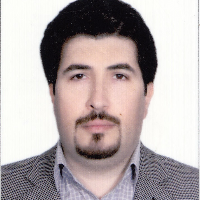Estimating Soil Moisture from Fusion of Soil Physical/Hydraulic Properties and Optical Remote Sensing Observations Using Machine Learning
Author(s):
Article Type:
Research/Original Article (دارای رتبه معتبر)
Abstract:
Soil moisture content (SM) is a critical state variable that significantly affects both the hydrological cycle and agricultural production. Therefore, accurate estimation of soil moisture is important for agricultural water resources management. Remote sensing observations in the near- and shortwave infrared have large potential for estimating soil moisture. In addition, soil physical and hydraulic properties affect spatial and temporal variability of soil moisture. The objective of this research was to derive different models for soil moisture estimation in Amir Kabir sugarcane agro-industry fields, Kuzestan province using a combination of soil physical/hydraulic properties and remote sensing observations with machine learning algorithms. Consequently, 166 ground control points and 16 Sentinel-2 satellite images were investigated during the growth period of sugarcane in the year 2021. Six machine learning algorithms including decision tree (DT), support vector machine (SVM), Linear regression, Boosted and Bagged trees, and nural network were used for modeling. Seven models were derived from the combination of soil physical/hydrological properties and remote sensing indices in a hierarchical manner to predict soil moisture content at the field scale. The results indicated that the combination of soil physical/hydraulic properties with remote sensing indices enhances the accuracy of soil moisture estimation. It is observed that almost all developed models performed well for estimating soil moisture, with an RMSE of 0.04-0.06 cm-3cm-3 and an R2 of approximately 0.80. The STR parameter was found to be more sensitive to changes in soil water content than NIR reflectance. Therefore, STR was identified as the most important feature in estimating soil moisture content. Moreover, stepwise linear regression with RMSE value of 0.042 cm3 cm-3 performed the best in soil moisture estimation. According to the results, the models successfully capture the spatiotemporal dynamics of soil moisture and can be used for irrigation scheduling and precision irrigation management at the field scale.
Keywords:
Language:
Persian
Published:
Iranian Journal of Soil and Water Research, Volume:53 Issue: 7, 2022
Pages:
1575 to 1591
https://www.magiran.com/p2529658
سامانه نویسندگان
مقالات دیگری از این نویسنده (گان)
-
Digital Mapping of Soil Penetration Resistance and Shear Strength using Machine Learning Algorithms in the Kilane Watershed, Kurdistan Province
Farzaneh Parsaie, *, Masoud Davari, Ruhollah Taghizadeh-Mehrjardi
Journal of Range and Watershed Management, -
Spatial Estimation of Soil Erosion and Sediment Yield in GIS Environment Using SEDD and RUSLE Models: A Case Study Roudzard Watershed in Khuzestan Province
Shekoufeh Davoudi, Heidar Ghafari*,
Iranian Journal of Watershed Management Science and Engineering,



